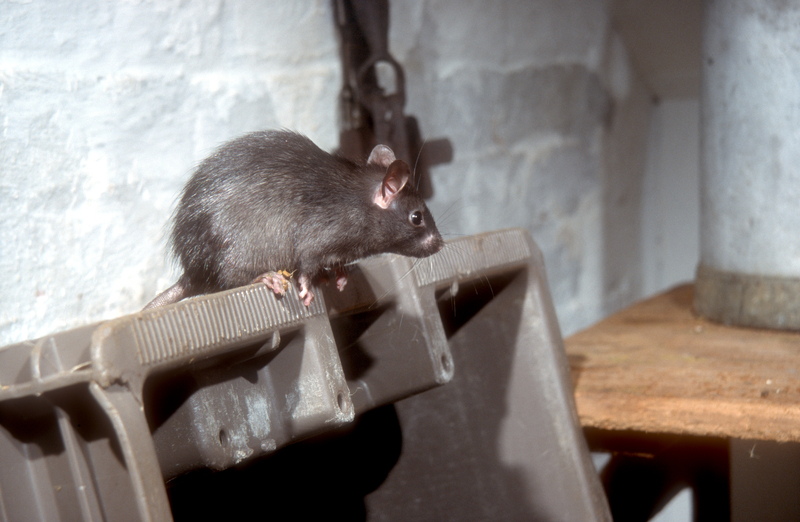
Identifying Roof Rat Droppings
One of the best ways to find roof rat nests is to follow their messes. Not only do the untidy pests scatter nesting material, shells, and rinds, but they also leave trails of dark brown feces. These paths mark the routes they travel between food sources and nests. Look for 1/2-inch long, curved droppings with pointed ends to be sure that roof rats, and not another type of rodent, are the culprits.
Dangers of Roof Rat Droppings Inside
Roof rat droppings pose serious health risks to homeowners. The pests often enter pantries and cupboards, polluting food with feces, urine, and saliva. Eating these things can give humans foodborne illnesses like salmonellosis. Simply being near the rodents’ waste in closed spaces can be even more dangerous. Breathing in dried droppings or absorbing them after touching the eyes, nose, or mouth can cause a deadly disease called hantavirus.
Roof Rat Control
To stay on top of waste issues, get rid of roof rats quickly before they give birth to more young. Traps are the best control choice, though they are only effective if set with the right location, angle, and bait. When removing dead rats or droppings, avoid stirring up dust to stay safe from contracting hantavirus. Ventilate closed areas before cleaning, then pick up dead animals and feces by hand with proper protection. Do not sweep or vacuum droppings, since this may release waste particles into the air. The safest option is calling wildlife control specialists with the experience and gear to take care of roof rat problems.